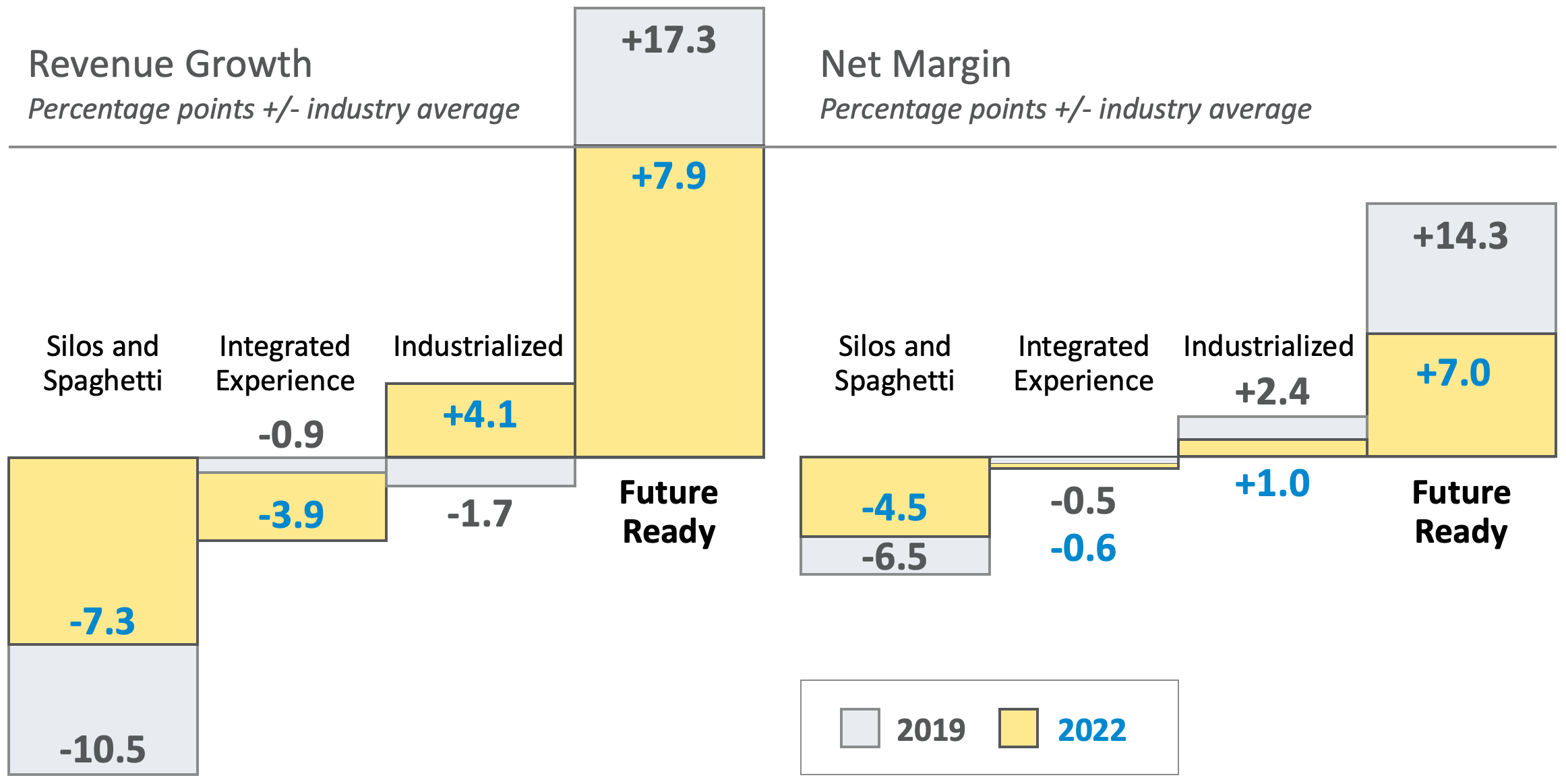Building an End-to-End E-Commerce Platform
In 2018, Dawn Foods served market account customers—small artisanal bakeries and some small and medium manufacturers—solely via a large team of sales representatives. But the company’s customers, most of whom were digitally savvy and ordered supplies from other companies online, were asking Dawn for that option. The company’s executive team decided to fund an end-to-end e-commerce system to satisfy changing customer expectations.
The executive team worked with a consulting company to help scope the digital business transformation. The team defined a purpose—their North Star—to become a digital-first company, which resonated internally; and in February 2019 hired a chief digital officer and new executive team member, Bob Howland, to build a digital business model from scratch. In June of 2019, Howland proposed a one-year digital business transformation to the board. The digital transformation push was a big success: in July of 2020, Dawn launched its e-commerce platform.
Developing and launching Dawn’s digital business model in one year involved two activities: (1) developing new enterprise-wide capabilities to enable the company to become digital-first by creating eight parallel work streams,[foot]The eight parallel work streams focused on delivering new enterprise-wide capabilities such as an online product catalog, centralized pricing management, go-to-market capabilities for different customer types, and supply chain end-to-end visibility and optimization.[/foot] and (2) establishing an e-commerce model with a new digital innovation hub in a ninth work stream.[foot]These two activities represent transformation pathways from MIT CISR research: Pathway 3—alternating focus between customer experience and organizational efficiency—for the existing organization, and Pathway 4—starting a new, separate initiative built future ready—for the e-commerce initiative. For a description of the pathways, see Woerner, Weill, and Sebastian, Future Ready: The Four Pathways to Capturing Digital Value.[/foot]
The executive team appointed CDO Howland as a co-chair of each of the eight parallel work streams. Howland worked with each work stream leader to set goals related to the e-commerce platform for their work stream, and the executive team required that each work stream prioritize those goals in the first 10 percent of its deliverables.
Howland led the ninth work stream, starting with a six-month sprint to create the architecture and a roadmap for the platform, and then hiring the digital innovation hub team and setting up a steering committee. The steering committee, which included the president of Dawn’s North American business, the head of North American finance, and the CDO, met weekly to review progress on the project plan, ensure that work streams were tracking to targets, and identify potential critical path items. Transparent communication on outcomes was key to meeting what was a very fast timeline.












